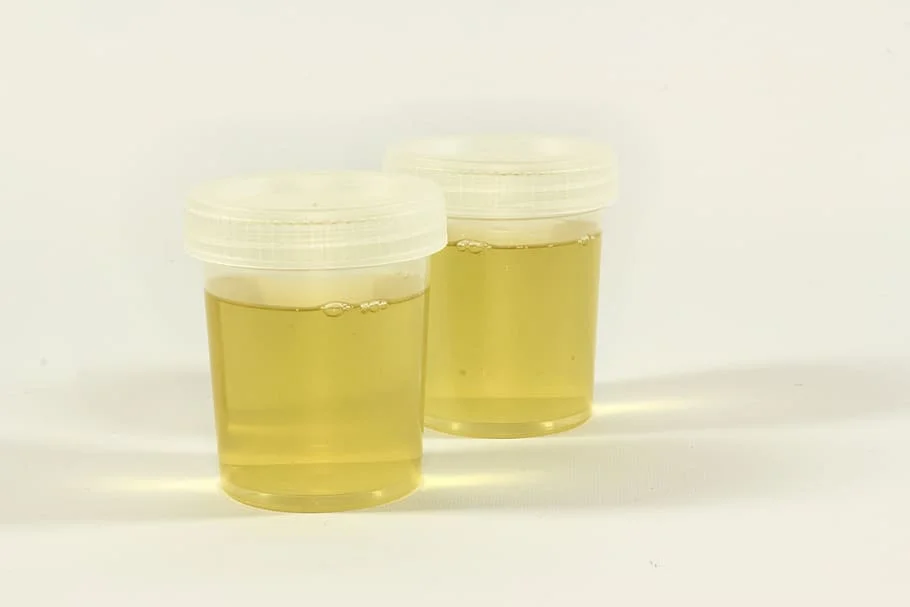Can Labs Tell The Difference Between Real And Synthetic Urine?
Can Labs Tell The Difference Between Real And Synthetic Urine?
The simple answer is yes!
Labs today can run several tests to distinguish whether a given sample is genuine or fabricated.
In this article, we’ll delve deeper into the characteristics of both real and synthetic urine, as well as discuss whether labs can tell.
Real Urine
Real urine is naturally produced by our bodies which filter by kidneys to remove waste and excess substances from the body.
It plays a vital role in maintaining our body’s overall fluid balance, and electrolyte levels, and removing harmful toxins.
Here are the typical characteristics of real urine:
- Color: Ranges from pale yellow to deep amber, depending on hydration levels.
- Odor: Generally odorless, although certain foods or medications can give it a distinctive smell.
- Volume: 750–2000 mL per 24 hours is considered normal.
- pH: The range is from 4.5 to 8.0 and the average is approximately 6.0.
- Specific gravity: The measurement 1.003-1.032 indicates the concentration of dissolved particles in the urine.
- Osmolarity: 40–1350 mOsmol/kg.
- Urobilinogen: 0.2–1.0 mg/100 mL, a byproduct of the breakdown of hemoglobin.
- White blood cells: 0–2 HPF (per high-power field of microscope), indicates the presence of inflammation or infection.
- Leukocyte esterase: None, as its presence might indicate an infection.
- Protein: None or trace amounts.
- Bilirubin: <0.3 mg/100 mL, a waste product resulting from the breakdown of red blood cells.
Synthetic Urine
Synthetic urine is a laboratory-made substance that is made with different chemical combinations. Its primary use is to Tamper and adulterate drug testing samples. Fake urine is also used by different companies to test their products.
Synthetic urine typically includes:
- Artificially created color and odor: To simulate the appearance and smell of real urine.
- Chemical compounds: Such as creatinine, urea, and uric acid mimic the natural components found in real urine.
- pH and specific gravity: Mimics the values found in real urine to pass laboratory standards.
- Temperature: Typically comes with a heating pad to maintain the body temperature of real urine.

Can labs tell the difference between real and synthetic urine
Synthetic urine-making techniques become more advanced it becomes harder for hospital laboratories to tell the difference.
However, drug test labs still have different methods to identify fake urine, including:
- Shaking samples: Real urine contains protein which makes bubbles when it is shaken because Synthetic did not have much protein.
- Smelling: Urine has bacteria that make it smelly, and they multiply more when the urine is outside the body with time passing. The synthetic urines smell remains the same almost.
- Advanced technology: Modern drug testing technologies have the power to identify synthetic urine.
- Detection of chemical markers: Some labs test for specific chemicals that are commonly used in synthetic.
- Unnatural components: If the lab identifies certain compounds not typically found in human urine, it can signal the sample is fake.
- Temperature: Natural urine temperature should be the same as the average body temperature ranging between 32° Celsius to 38°Celsius.
Consequences of using synthetic urine
Using synthetic urine can have the following consequences:
- Failed drug tests
- Legal trouble
- Employment issues
- Loss of trust and credibility
- Professional licensing problems
- Financial costs
- Negative impact on personal well-being
Here is a table for the difference between real and synthetic urine.
| Real Urine | Synthetic Urine | |
|---|---|---|
| Source | Produced by a living body | Made in laboratories |
| Composition | Contains natural components such as urea, creatinine, amino acids, hormones, and metabolites | Contains synthetic components designed to mimic real urine, such as urea, sodium, chloride, potassium, and creatinine |
| Smell | Has a distinct odor due to the presence of odor-producing bacteria | May have a different smell, but newer formulas for synthetic urine include proteins to mimic the odor of real urine |
| Color | Varies depending on factors like hydration and diet | Synthetic urine may change in color or have additives to mimic the color of real urine |
| Purpose | Naturally produced for waste elimination and maintaining bodily functions | Primarily used for testing purposes, such as calibrating equipment, testing products, or attempting to pass drug tests |
| Temperature | Matches the average body temperature, ranging from 32°C to 38°C | Synthetic urine temperature may vary and may not match the body temperature |
| Detection | Difficult to differentiate from real urine with traditional or outdated testing methods | Advanced drug testing technologies can identify unique markers or discrepancies between real and synthetic urine |
| Consequences of Use | Tampering or substituting urine samples can lead to legal consequences, job termination, or refusal of medication | Misuse can lead to legal consequences, such as jail time for individuals on probation or termination from employment |
Refence Links







